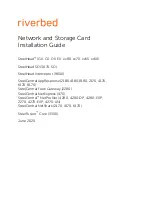
ADVANCED MANUAL / bit Ten D /
35
5.
Cut-off frequencies
-
Hi-P Hz
10 ÷ 20000: filter High-Pass
-
Lo-P Hz
10 ÷ 20000: filter Low-Pass
If you select the Band-Pass filter, both Hi-P Hz and
Lo-P Hz boxes will be available to set the band frequency.
You can select the cut-off frequency by:
-
clicking on the corresponding drop-down menu, selecting the frequency range
that includes the value to be set, and then the actual value;
-
clicking on the corresponding drop-down menu, selecting the frequency range
and then moving from value to value with the arrow keys (up / down) on the PC
keyboard;
-
clicking on the corresponding drop-down menu and then moving from value to
value with a mouse featuring a rotating scroll wheel.
In STANDARD mode
the crossing frequency for speakers
of the same front is bound with a -3 dB crossover.
E.g.
If you change the Front Woofer low pass cut-off frequency, the Front Mid-Hi hi-pass cut-off frequency will also
automatically change. If you change the Subwoofer low-pass cut-off frequency, instead, the Front Woofer hi-pass
cut-off frequency won’t change.
In EXPERT mode
the crossing frequency for speakers of the
same front is free, meaning that cut-offs can be created with a
value other than -3 dB.
6.
Filter slope
- Hi-P Slope
12/24 dB/Oct (Linkwitz) 6/12/18/24dB/Oct (Butterworth)
- Lo-P Slope
12/24 dB/Oct (Linkwitz) 6/12/18/24 dB/Oct (Butterworth)
When starting the
bit Ten D
software, it offers Linkwitz with 12 dB/Oct. slope.
Eg.
If you select Band Pass as filter type, the slope will be applied to both hi-pass
and low-pass as the default slope, but it is also possible to unbind them.
The crossover filter response corresponding to the selected channel is displayed on the graph by a red curve, as in
the examples below.
Ex.: Band Pass
8
Crossover Frequency 80 - 2000 Hz @ 12 dB/Oct.
Crossover Frequency 80 Hz @ 6 dB/Oct. Hi-pass
2000 Hz @ 24dB/Oct. Low-pass
Crossover Frequency 80 - 2000 Hz @ 24 dB/Oct.
Crossover Frequency 80 Hz @ 24 dB/Oct. Hi-pass
2000 Hz @ 6 dB/Oct. Low-pass
5
6
















































